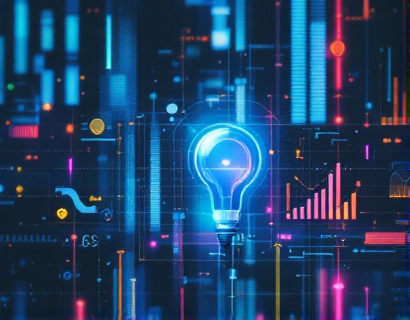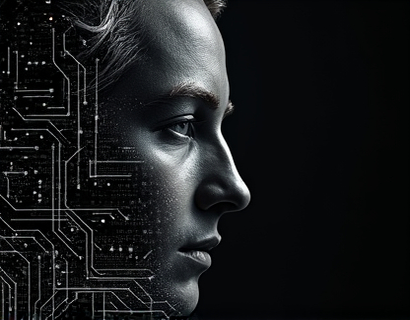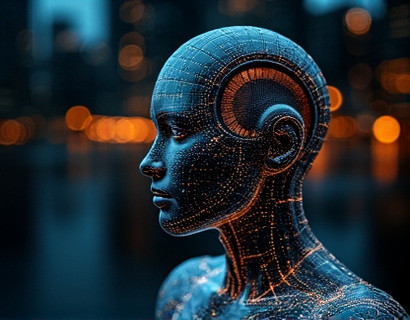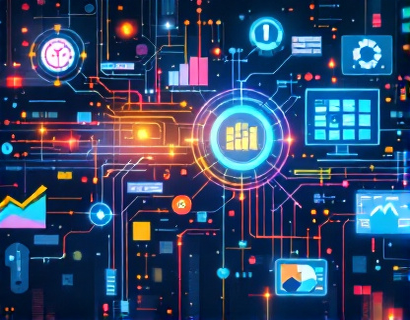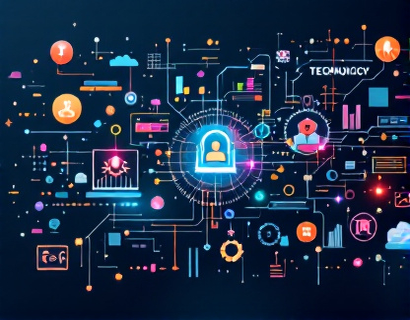Unlocking Enhanced Digital Experiences: Leveraging Crypto and AI for Next-Gen Transformation
The digital landscape is rapidly evolving, driven by technological advancements that promise to redefine how businesses operate and interact with users. At the forefront of this transformation are two revolutionary technologies: cryptocurrency and artificial intelligence (AI). By merging these forces, organizations can unlock unprecedented potential, enhancing both their internal processes and user experiences. This article serves as a comprehensive guide for tech leaders aiming to harness the power of blockchain and AI for next-generation digital transformation.
Understanding the Synergy Between Crypto and AI
To fully leverage the benefits of crypto and AI, it's essential to understand how these technologies complement each other. Cryptocurrency, built on blockchain technology, offers a decentralized, secure, and transparent way to conduct transactions. AI, on the other hand, brings intelligent automation and data-driven insights to the table. When combined, they create a powerful synergy that can optimize business operations, enhance security, and provide personalized user experiences.
Enhancing Security and Trust
One of the primary advantages of integrating crypto into digital systems is the enhancement of security and trust. Blockchain's inherent properties, such as immutability and transparency, ensure that transactions are tamper-proof and verifiable. This is particularly crucial in industries dealing with sensitive data, such as finance, healthcare, and supply chain management. AI can further bolster security by detecting and mitigating threats in real-time, using machine learning algorithms to identify patterns and anomalies that traditional security measures might miss.
For instance, AI-driven security systems can monitor network activities continuously, flagging suspicious behaviors and automating responses to potential threats. This proactive approach not only protects against external attacks but also ensures compliance with regulatory standards, thereby building trust with users and stakeholders.
Optimizing Business Operations
Beyond security, the integration of crypto and AI can significantly optimize business operations. Smart contracts, a key feature of blockchain technology, automate and enforce contractual obligations without the need for intermediaries. This not only reduces costs but also speeds up processes, making them more efficient and reliable. AI can enhance smart contracts by providing intelligent logic and predictive analytics, ensuring that contracts adapt to changing conditions and requirements.
Supply chain management is another area where this synergy shines. By using blockchain to track the movement of goods and AI to predict demand and optimize inventory, businesses can achieve greater transparency and efficiency. AI algorithms can analyze vast amounts of data to forecast market trends, helping companies make informed decisions and reduce waste.
Personalizing User Experiences
In the digital age, personalization is key to retaining user engagement and loyalty. AI-driven analytics can process user data to create detailed profiles, enabling businesses to offer tailored content, recommendations, and services. When combined with the secure and decentralized nature of crypto, this personalization can be taken to new heights. For example, users can control their data privacy and choose how their information is used, all while enjoying personalized experiences.
Consider a scenario where a user interacts with a digital platform. AI algorithms analyze their behavior and preferences, suggesting relevant content or products. Transactions related to these interactions can be securely handled using cryptocurrency, ensuring that user data remains private and transactions are transparent. This seamless integration enhances the user experience, fostering greater trust and satisfaction.
Innovative Financial Models
The convergence of crypto and AI opens up new financial models that can revolutionize how businesses monetize their digital offerings. Tokenization, for instance, allows for the creation of digital tokens that represent assets, rights, or utilities. These tokens can be traded on blockchain platforms, providing a flexible and transparent way to fund projects, reward users, and incentivize participation. AI can optimize token pricing and distribution strategies, ensuring maximum impact and efficiency.
Another innovative model is the use of AI to create dynamic pricing systems based on real-time demand and user behavior. By analyzing market data and user preferences, AI can adjust prices to maximize revenue while maintaining user satisfaction. This dynamic approach, powered by blockchain for transparency and security, can lead to more equitable and efficient marketplaces.
Building Decentralized Applications
Decentralized applications (dApps) are a prime example of how crypto and AI can transform digital experiences. dApps leverage blockchain's decentralized architecture to provide users with greater control and autonomy. AI can enhance these applications by adding intelligent features such as natural language processing, image recognition, and predictive analytics. This combination results in applications that are not only secure and transparent but also highly functional and user-friendly.
For example, a decentralized social media platform can use AI to curate content based on user preferences, while ensuring that user data is stored securely on the blockchain. Users can manage their privacy settings and monetize their content through tokenized rewards, creating a more engaging and equitable platform.
Challenges and Considerations
While the potential benefits are significant, integrating crypto and AI also comes with challenges. One of the primary concerns is the regulatory landscape, which is still evolving and varies across jurisdictions. Businesses must navigate these regulations carefully to ensure compliance and avoid legal pitfalls. Additionally, the technical complexity of these technologies requires a skilled workforce, which can be a barrier for some organizations.
Another consideration is the energy consumption associated with blockchain, particularly proof-of-work systems. While newer consensus mechanisms like proof-of-stake are more energy-efficient, the environmental impact remains a topic of debate. Organizations should explore sustainable practices and support the development of eco-friendly blockchain solutions.
Strategies for Implementation
For tech leaders looking to embark on this transformative journey, several strategies can facilitate a smooth transition:
- Build a skilled team: Invest in training or hire professionals with expertise in both crypto and AI to drive the integration process.
- Conduct thorough research: Stay updated on the latest developments in both fields to make informed decisions and avoid common pitfalls.
- Start small: Begin with pilot projects to test the waters, gather insights, and refine approaches before scaling up.
- Focus on user education: Ensure that users understand the benefits and functionalities of the new systems to foster adoption and trust.
- Collaborate with partners: Partner with other organizations, research institutions, and technology providers to leverage collective expertise and resources.
By following these strategies, organizations can effectively integrate crypto and AI, unlocking new possibilities and staying ahead in the digital race.
Conclusion
The fusion of cryptocurrency and artificial intelligence represents a paradigm shift in digital transformation. By embracing this synergy, businesses can enhance security, optimize operations, personalize user experiences, and explore innovative financial models. While challenges exist, the potential rewards are immense, paving the way for a more secure, efficient, and user-centric digital future. Tech leaders who proactively adopt these technologies will not only stay competitive but also shape the next generation of digital experiences.




